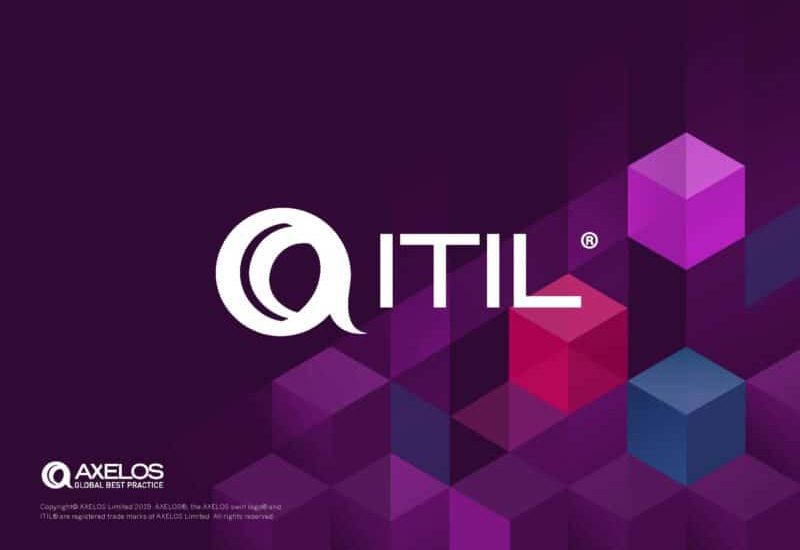What Is ITIL®?
Transform Help Desk Processes With the ITIL Framework
Editorial Team
6 Min Read
ITIL® is a framework of best-practice solutions for IT services management and improving support for customers. The term used to stand for Information Technology Infrastructure Library in the 1980s when the British government’s Central Computer and Telecommunications Agency (CCTA) first created the framework. Since then, ITIL has evolved into a standalone term as the concepts have modernized to align with current IT practices.
The main objective of ITIL is to provide value by aligning IT resources with a customer’s specific needs, even as they change. ITIL involves detailed process descriptions, success factors, flows, implementation guidance, and metrics that customers can adapt to perform in their environment. The framework has matured significantly since its inception, with the current ITIL 4 being released in 2019.
ITIL can help companies strengthen customer relations, manage risk, develop cost-effective practices, and create a stable IT environment for problem-solving and growth.
ITIL Service Life Cycle and Guidelines
In the latest iteration of ITIL, the framework focuses on a concept called the service value system (SVS). At the core of the SVS is the service value chain that consists of six practices that deliver value to an organization:
- Plan: This practice involves creating plans and policies surrounding an IT infrastructure. This outline establishes a vision of an organization’s goals and how a team can go about achieving them.
- Engage: Engagement with stakeholders is an essential practice for addressing needs, offering transparency, and maintaining ongoing communication with anyone involved in the organization.
- Design and transition: Teams design new services that meet stakeholders’ needs while addressing expectations of cost, quality, and time to market.
- Obtain/build: Architects create the service components necessary to execute the design. This practice often involves working with internal and external partners and suppliers while referring to the information in the planning, engaging, and designing practices.
- Deliver and support: The service components are implemented, and the team determines if the executed design meets the stakeholders’ requirements. This practice may involve change requests to adapt the infrastructure and built-out support tasks for making the most of the system.
- Improve: Modern ITIL guidelines emphasize continual improvement. In this practice, support teams determine what plans and initiatives an organization can implement to enable the improvement of products, services, and practices.
The practices in the SVS constantly build off of one another to create an agile IT ecosystem that can respond to problems and deliver high-value solutions.
ITIL Best Practices and Methodology
Before implementing the SVS, organizations should clearly understand their objectives and define the problems they are attempting to solve. It’s often beneficial to start small with gradual implementation rather than trying to incorporate multiple stages simultaneously.
Governance is also a significant addition to ITIL 4, which involves constant oversight and assessment of the system to confirm that it still meets current goals and the organization’s vision. Integrating the improvement aspect of the SVS is an ongoing practice that organizations should regularly apply to get the most from the ITIL framework.
Why Businesses Should Outsource Their ITIL Service Desk
An effective and efficient service desk keeps a company’s digital environment operating optimally. It identifies inaccuracies and flaws in IT deployments and takes the appropriate measures to fix them. The support of a capable service desk is what keeps an entire IT system operating as intended.
A service desk is responsible for all IT services and support, including request management, asset management, and change management. It works strategically with other processes and units to maximize functionality. Using an ITIL service desk follows a holistic approach to aligning a business with its IT vision. This setup engages in proactive problem management to minimize the occurrence of significant incidents.
Internal teams may lack the resources to manage an ITIL service desk. With the ITIL service desk playing such a critical role, outsourcing can extend the responsibilities to a reliable team, so operations can continue to function efficiently.
ITIL Service Desk Benefits
Several of the primary benefits of using an ITIL service desk include:
- It promotes an improved alignment between IT and the business.
- It creates more flexible service delivery to support an organization through digital transformation.
- It maximizes service delivery and customer satisfaction.
- It reduces costs by enhancing resource utilization.
- It offers increased visibility of IT costs and assets.
- It provides better risk management and facilitates service disruptions.
- It streamlines integration between changing software delivery and enterprise customer support.
Without a service desk, users may face uncertainty about who to contact when issues arise. Technical issues may result in higher drops in productivity as problems go unresolved, and teams may fail to identify consistent incident resolution as issues occur.
With a well-integrated ITIL service desk, an organization has the infrastructure it needs to run existing systems and improve them. In the wake of many businesses migrating to the cloud, ITIL 4 is particularly valuable for creating new IT practices where an ecosystem has completely changed. IT requires extensive resource utilization, and finding a way to optimize this usage can drive enterprise success.
Advantages of Partnering With GDC
GDC can help companies handle IT service needs, challenges, and requirements, whether they’re a small company in the early growth stages or a Fortune 500 enterprise. GDC has offices strategically placed in the Mid-Atlantic and Midwest. As an ITIL service desk provider, the GDC team will be the single contact point for all support needs.
With supplemental options to back up existing IT teams, GDC can also provide service desk support when staff is short-handed.
Additional benefits include:
- Access to a 100% U.S.-based, U.S.-citizen, and regional workforce with 24/7, multichannel, multilingual capability.
- Use of existing information technology service management (ITSM) tools with service desk solutions, regardless of the type or size of the industry or organization.
- Ability to scale up or down as company demands change or if specific projects lead to increased volume during implementation.
Through GDC’s services, organizations can take on more productive roles in their company’s digital transformation efforts. With seamless integration in existing tech stacks, the transition is straightforward, and teams can reduce responsibilities related to hiring, retaining, and managing experienced staff.
Trusting GDC With Your Service and Help Desk Needs
GDC has provided industry-leading technical support to companies of all sizes since 1995, helping them implement new IT services while maintaining their existing systems. Access to ITIL-based services will enable businesses to handle IT incidents, service requests, and problem management.
Through a free assessment, GDC evaluates your current technical support operation and identifies strengths, weaknesses, and challenges to provide a customized solution geared specifically for your needs. Contact GDC online or call 866-966-4562 today to learn more about how available services can benefit your business.





